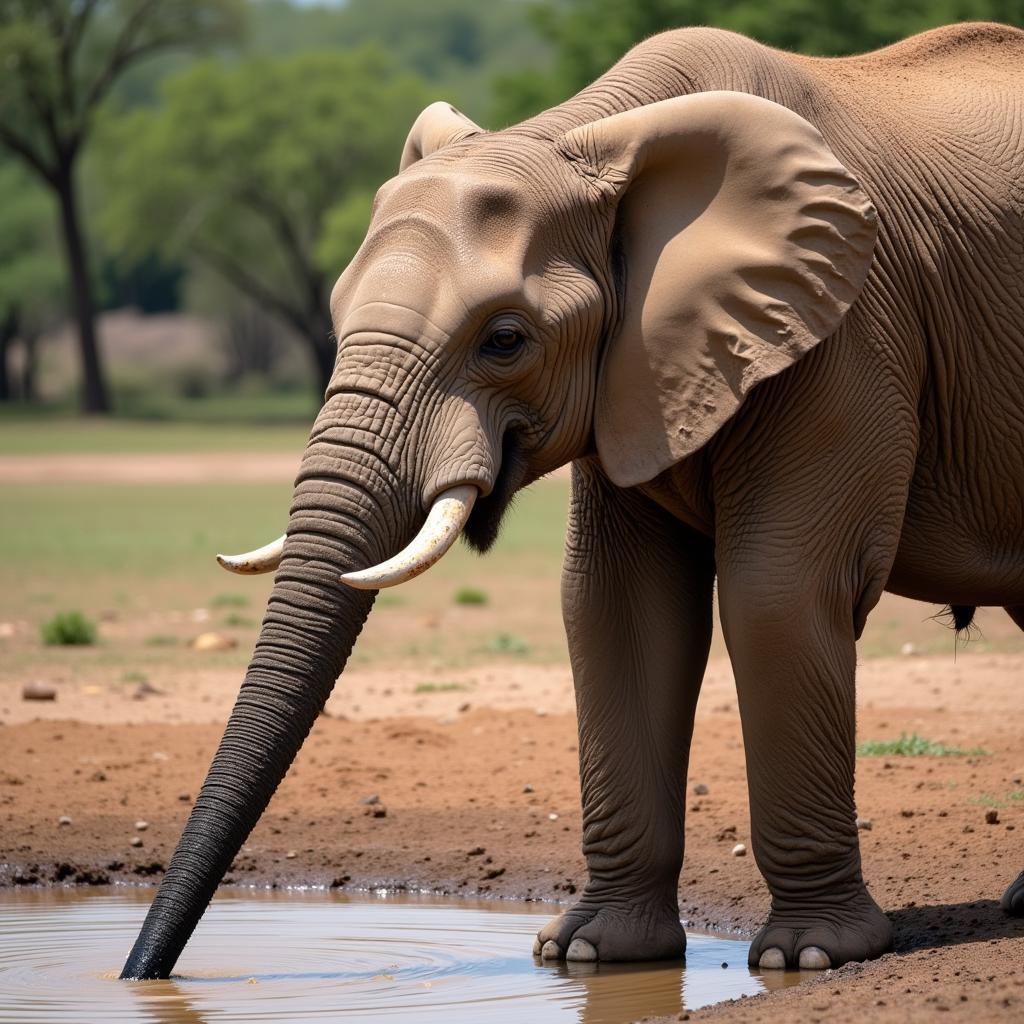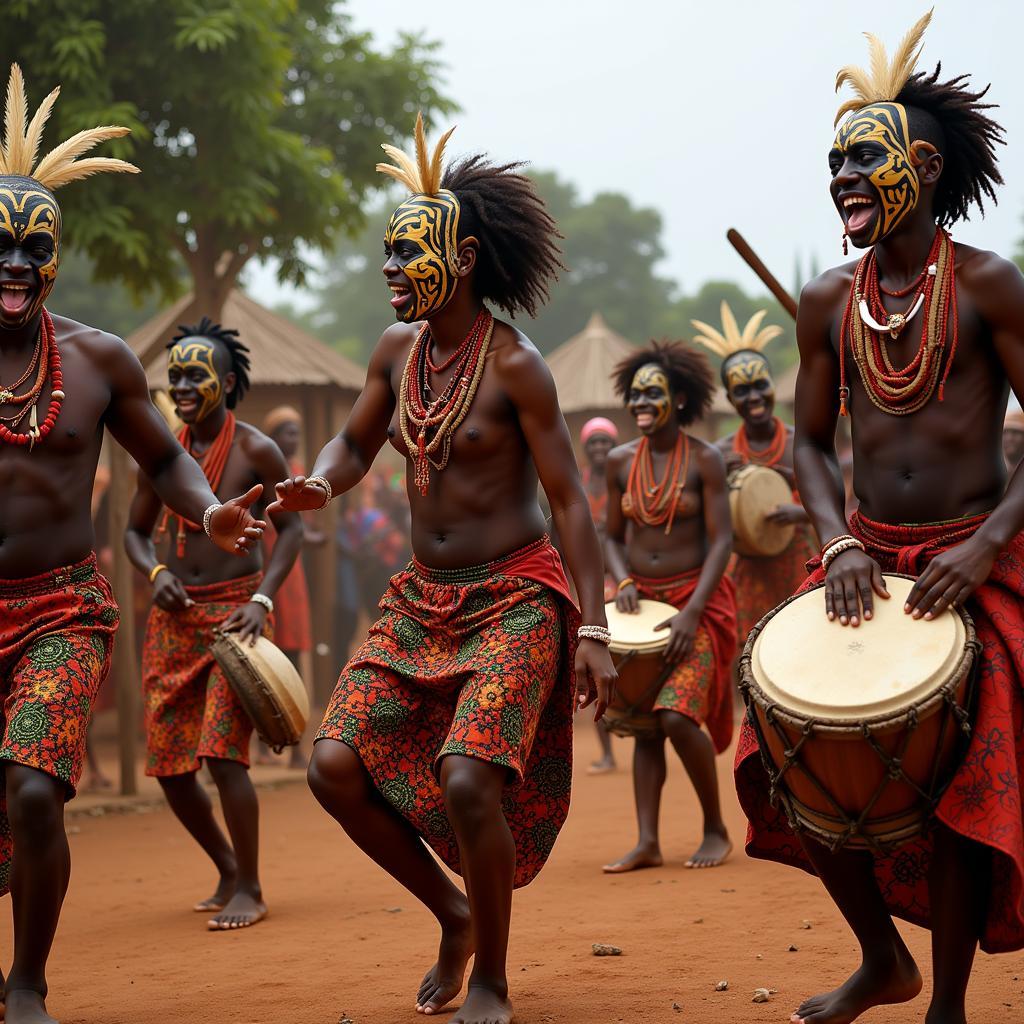African Elephant Trunk Wiki: A Deep Dive into an Evolutionary Marvel
The African elephant trunk, a marvel of nature, is an iconic symbol of the continent’s wildlife. Much more than just a long nose, this incredible appendage is an intricate fusion of strength, dexterity, and sensory perception, playing a vital role in the daily life of these magnificent creatures.
 African elephant using trunk to drink water
African elephant using trunk to drink water
Deconstructing the Trunk: A Closer Look at Anatomy and Function
The African elephant trunk is formed by the fusion of the nose and upper lip, resulting in a powerful and versatile tool. Composed of no bones and an estimated 150,000 muscle fascicles (bundles of muscle fibers), the trunk showcases the epitome of evolutionary engineering. This muscular structure provides incredible strength, enabling elephants to lift objects weighing hundreds of pounds, while simultaneously possessing the delicate touch needed to pluck a single blade of grass.
Breathing, Smelling, and Beyond: The Many Roles of a Trunk
The African elephant trunk is essential for a wide range of activities:
- Breathing: The trunk serves as the primary airway, drawing air into the lungs.
- Drinking: Elephants use their trunks as muscular straws, sucking up water and then squirting it into their mouths.
- Trumpeting: This loud, resonating call, produced by forcing air through the trunk, is crucial for communication, expressing a range of emotions from excitement to distress.
- Smelling: The trunk’s highly developed olfactory receptors grant elephants an exceptional sense of smell, surpassing even that of bloodhounds.
- Touching and Feeling: Equipped with sensitive finger-like projections at the tip, the trunk allows elephants to explore their surroundings with incredible precision, delicately manipulating objects and detecting subtle textures.
- Feeding: From grasping branches to pluck leaves to delicately picking up fruit, the trunk is indispensable for foraging and feeding.
 African elephant calf learning to use its trunk
African elephant calf learning to use its trunk
Trunk Talk: Communication and Social Bonding
African elephants utilize a complex system of communication that extends beyond their impressive trumpeting. Subtle trunk movements, touches, and gestures play a crucial role in conveying messages within the herd. From gentle caresses between a mother and calf to warnings conveyed through a swift trunk slap, these nonverbal cues strengthen social bonds and maintain order within the elephant society.
The Trunk in Danger: Threats and Conservation Efforts
Sadly, the iconic African elephant trunk, a symbol of strength and adaptability, is also a target for poachers seeking valuable ivory. Conservation efforts are crucial to protect these magnificent creatures and ensure that future generations can marvel at the evolutionary wonder that is the African elephant trunk.
African Elephant Trunk FAQ:
Q: How much weight can an African elephant trunk lift?
A: An African elephant trunk can lift an impressive 600 pounds, showcasing its incredible strength.
Q: How do elephants use their trunks for drinking?
A: Elephants use their trunks like straws, sucking up water and then blowing it into their mouths.
Q: What is the purpose of the two finger-like projections at the tip of an African elephant’s trunk?
A: These sensitive projections provide a heightened sense of touch, allowing for delicate manipulation of objects and exploration of textures.
You might also be interested in:
Need Help?
Contact us at:
Phone Number: +255768904061
Email: [email protected]
Address: Mbarali DC Mawindi, Kangaga, Tanzania.
We have a 24/7 customer service team.

